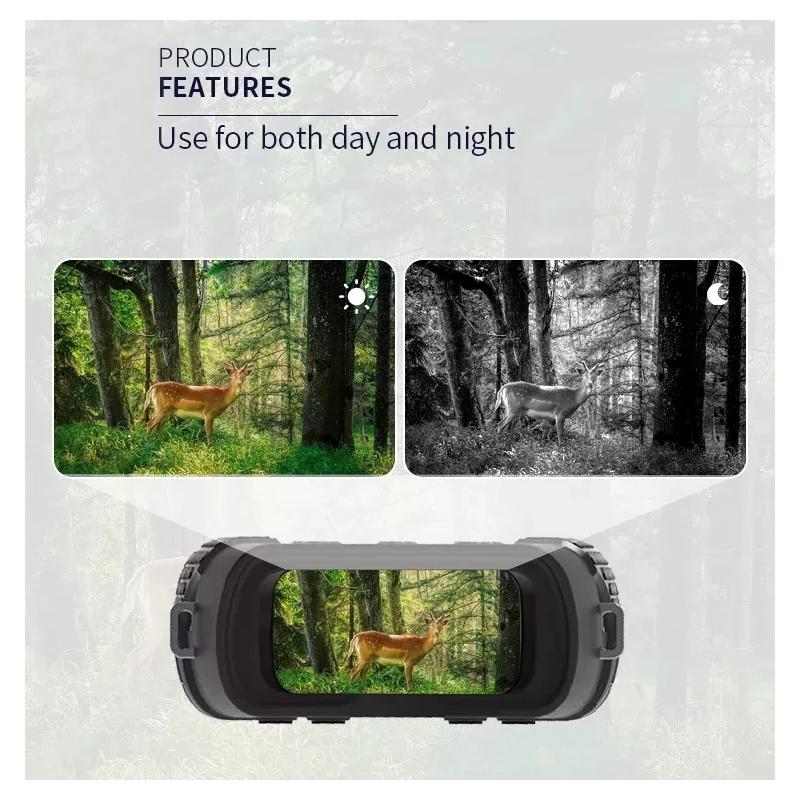How Much Are Night Vision Goggles?
Night vision goggles have become a sought-after technology for a variety of applications, from military and law enforcement use to recreational activities like hunting, wildlife observation, and security. The price of night vision goggles can vary significantly depending on several factors, such as the type of technology, brand, features, and quality. In this article, we'll break down the different types of night vision goggles available on the market, what influences their pricing, and how much you can expect to pay for a good pair.
Types of Night Vision Technology

Night vision goggles typically rely on two main types of technology: Image Intensification (I2) and Thermal Imaging. Each has its own distinct features, advantages, and price ranges. Understanding these technologies will give you a better grasp of why prices differ so widely.
1. Image Intensification (I2) Night Vision Goggles
Image intensification works by amplifying the available light in a scene, such as starlight or moonlight, and enhancing it to create a visible image. The goggles collect photons (light particles) from the environment, convert them into electrons, and then amplify these electrons. The electrons are then projected onto a phosphor screen, creating a visible image in green hues.
I2 technology has been the standard for night vision for many years and is widely used in both civilian and military applications. The main factors that affect the price of I2 night vision goggles are:
- Generation of the Technology: I2 technology comes in several generations, with each subsequent generation offering improved performance, image clarity, and light sensitivity.
- Gen 1: These are the most affordable and offer the lowest performance in terms of clarity, image quality, and range. Gen 1 goggles are typically effective up to 75-100 meters in total darkness and may have a grainy, blurry image.
- Gen 2: Offers better resolution, clarity, and light sensitivity compared to Gen 1. Gen 2 devices are typically effective up to 200-250 meters, with improved image quality in low-light conditions.
- Gen 3: These are the most advanced and provide the clearest, brightest, and most sensitive images, even in near-total darkness. Gen 3 goggles can often provide usable images at distances of 300 meters or more, even with very little light. They are used in military, tactical, and high-end civilian applications.
- Tube Quality: The quality of the image intensifier tube (which converts light to an image) is a significant determinant of the price. High-quality tubes yield better image clarity and resolution. The most high-end Gen 3 devices use filmless or autogated tubes, which enhance performance under varying light conditions.
- Additional Features: Features like waterproofing, adjustable head straps, infrared illuminators (which can be used when there is no ambient light), and ruggedness can add to the cost.
Price Range:
- Gen 1 goggles: Typically range from $150 to $500. These are suitable for low-budget users and are best for occasional use in low-light conditions, like camping or basic surveillance.
- Gen 2 goggles: These usually cost between $800 and $3,000. They offer significantly better performance and are preferred by hunters, nature watchers, and law enforcement.
- Gen 3 goggles: Expect to pay $2,500 to $8,000+. These are professional-grade devices used by military personnel, special forces, and serious security professionals.
2. Thermal Imaging Night Vision Goggles
Thermal imaging technology works quite differently from image intensification. Instead of amplifying ambient light, thermal cameras detect heat signatures emitted by objects and create an image based on temperature differences. This allows thermal goggles to work in total darkness and even through smoke, fog, or dust, which can obstruct traditional night vision.
Thermal imaging goggles are increasingly popular for both professional and recreational use, especially in search and rescue operations, wildlife tracking, and security applications. However, they tend to be more expensive than traditional I2-based goggles.
- Thermal Resolution: The performance of thermal goggles depends on the resolution of the thermal sensor, with higher resolutions providing more detailed and accurate images.
- Refresh Rate: Higher refresh rates (usually in the range of 30Hz to 60Hz) lead to smoother video capture and are preferable for fast-moving scenarios.
- Detection Range: Some thermal goggles have longer detection ranges than others, with top-tier models able to detect heat signatures from hundreds of meters away.
Price Range:
- Basic Thermal Goggles: Entry-level thermal goggles typically range from $1,500 to $3,500. These are often used for recreational hunting or basic security surveillance.
- Mid-Range Thermal Goggles: More advanced models with higher resolution and better features cost anywhere from $4,000 to $10,000.
- High-End Thermal Goggles: Professional-grade goggles designed for military, law enforcement, and search-and-rescue applications can cost anywhere from $10,000 to $20,000+. These models typically offer superior image quality, longer detection ranges, and additional features like zoom capabilities and image recording.
Key Factors That Affect Night Vision Goggle Prices

While the type of night vision technology is the most significant factor in pricing, several other aspects can influence the cost of goggles:
1. Brand
Some brands are more reputable than others, often due to the quality of their products, customer service, and warranty options. Brands like ATN, FLIR, Pulsar, and Armasight are well-known in the night vision industry and tend to command higher prices because of their established reputation for quality and innovation.
2. Build Quality and Durability
If you plan to use your goggles in rugged environments, investing in models that are built to last is important. Some night vision goggles are waterproof, shockproof, and built to withstand harsh conditions. These tend to be more expensive due to the additional engineering required to make them durable in extreme conditions.
3. User-Friendly Features
Advanced features, such as adjustable brightness, focus, infrared illuminators, and head/helmet mounting options, can add to the price of the goggles. Some high-end models also come with built-in video recording, Wi-Fi connectivity, and smartphone integration, allowing you to stream or store video footage.
4. Magnification and Field of View
Goggles with zoom capabilities or adjustable magnification will generally be more expensive than basic models. A wider field of view or higher magnification can be beneficial for tactical operations or spotting distant objects at night, but these features often come with a higher price tag.
5. Warranty and Support
The longer the warranty and the more comprehensive the customer support, the higher the likely cost. High-end models typically offer multi-year warranties, and some even come with lifetime support for repairs and servicing.
How Much Should You Spend on Night Vision Goggles?

The price you pay for night vision goggles should align with the specific application you intend to use them for. Here are some guidelines:
- For Casual Use: If you're a hobbyist or need goggles for recreational use (such as camping or observing nocturnal wildlife), a basic Gen 1 or entry-level thermal goggle will likely suffice. Expect to spend between $200 and $1,000 depending on the technology and brand.
- For Serious Security or Law Enforcement: For surveillance or security purposes, you'll want something more reliable with better clarity, such as a Gen 2 or mid-range thermal imager. A budget of $1,000 to $5,000 is typically required for these applications.
- For Military, Tactical, or Professional Use: High-end Gen 3 or thermal goggles designed for military, law enforcement, or search and rescue operations can cost upwards of $5,000 and go all the way up to $20,000+.
In conclusion, the cost of night vision goggles can range from as little as $150 for basic models to $20,000+ for high-end military-grade systems. Your budget should be guided by your intended use. Casual users may find a simple, affordable pair of Gen 1 or entry-level thermal goggles to be sufficient, while professionals requiring top-tier performance and durability will likely need to invest in Gen 3 or advanced thermal imaging technology.
Ultimately, night vision goggles can offer tremendous value, especially when you need to operate in low-light or total darkness. Whether for security, hunting, or tactical operations, there's a model out there to fit almost any need and budget. However, always consider the trade-offs between cost and performance, and ensure that you're selecting the right technology for your specific requirements.








